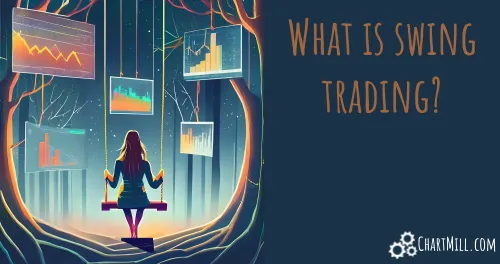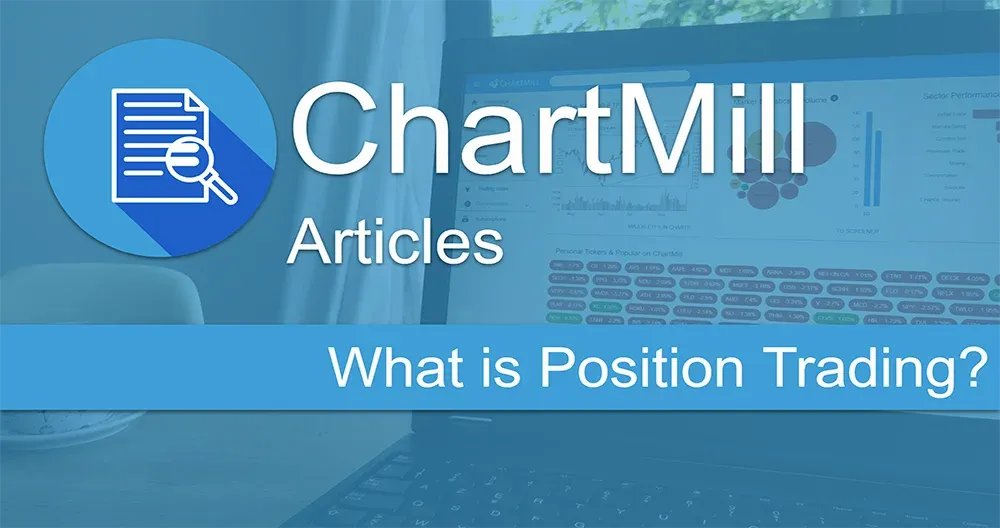The Buy-and-Hold Strategy
By Kristoff De Turck - reviewed by Aldwin Keppens
Last update: Apr 19, 2024
INTRO
Unlike daytrading and swing trading, this strategy is entirely focused on the long term. The basic principle is that shares are bought with the intention of holding them for years. In this regard the Buy-and-Hold approach has strong similarities with position trading. However, where position traders also take into account a technical long-term timing aspect (such as the price being above or below the 200SMA for example) this is completely absent from the buy and hold strategy.
In terms of timing, the advocates of the buy and hold approach are very clear. Successful investing is closely related to the amount of time you are effectively present in the market, not the timing of entry into the market. Buy and hold investors assume that it is impossible to consistently predict the many up and down fluctuations in the stock price making it pointless to try to time the market.
FUNDAMENTAL ANALYSIS
It should be obvious that technical analysis is of no concern to the classic 'Buy-and-Hold'-investor. He or she will focus largely on the financial figures and the future prospects of the company in question, as well as taking into account the experience of the management.
DIVERSIFICATION IS KEY!
To reduce the risk somewhat, sufficient diversification will play a major role in this type of strategy. Too little diversification is too big a risk in this kind of investing. Imagine for a moment that you have only three shares in port, each of which therefore makes up 33% of your total port, and one of these shares turns out to be a complete misbuy, then the negative effect on the total port is immense. Today, with the rise of ETFs, it has become very easy to have a very wide diversification in the stock market with just one or a few ETFs.
REBALANCING
When you have carefully composed your own passive portfolio for the long term, you will still have to follow the evolution of your stocks to make sure that the initial balance remains the same. If one or more of your shares have risen too much compared to the rest of the portfolio, the ratio will no longer be correct. You can fix that by selling a part of the strongly increased positions and buying shares of the remaining positions and/or new shares. This will ensure that the over-strong positions will be reduced somewhat in percentage terms and the balance will be restored.
THE EFFECT OF COMPOUND INTEREST
Whereas diversification ensures the reduction of risk, the compound interest ensures the exponential growth of a buy and hold portfolio. After all, profits are not sold. As a result, the amount grows much faster than what you receive with a purely simple interest on a principal amount. It would take us too far to go into this in this article but via this link you can read more about the power of interest-on-interest.
PERIODIC INVESTING
Periodic investing is another effective way to spread the risk in this form of investing. It is closely related to one of the basic principles of the buy-and-hold approach, namely that you can never time the market. By periodically buying additional shares, you will be buying in times of price increase as well as in times of price decrease. You will then get an average purchase price. This method is very suitable for those who want to start buy-and-hold but do not have significant financial reserves to build up a full buy-and-hold portfolio immediately.
BENEFITS OF THE BUY-AND-HOLD STRATEGY
- A very passive investment style that requires very little monitoring.
- The strategy is insensitive to the sometimes highly volatile movements in the stock markets.
- The lowest transaction costs and fees compared to other strategies due to the lack of active trading.
- Historically, this has been the most successful way of trading.
- The effect of compounding interest plays a large role.
DISADVANTAGES OF THE BUY-AND-HOLD STRATEGY
- Very passive investment style and therefore not suitable for those who like to actively manage their portfolio.
- The strategy itself may be insensitive to high volatility but can you, as an investor, handle it easily? When the markets are in a downtrend and stock prices are tumbling down, you can't sell, just like when the market after a violent but short-lived rise suddenly drops again, it is tempting to sell anyway and secure the profits...
- Even with an investment horizon of more than 15 years you are not automatically guaranteed a positive return.
Long-Term Chart of the Dow Jones Industrial Average (adjusted for inflation).
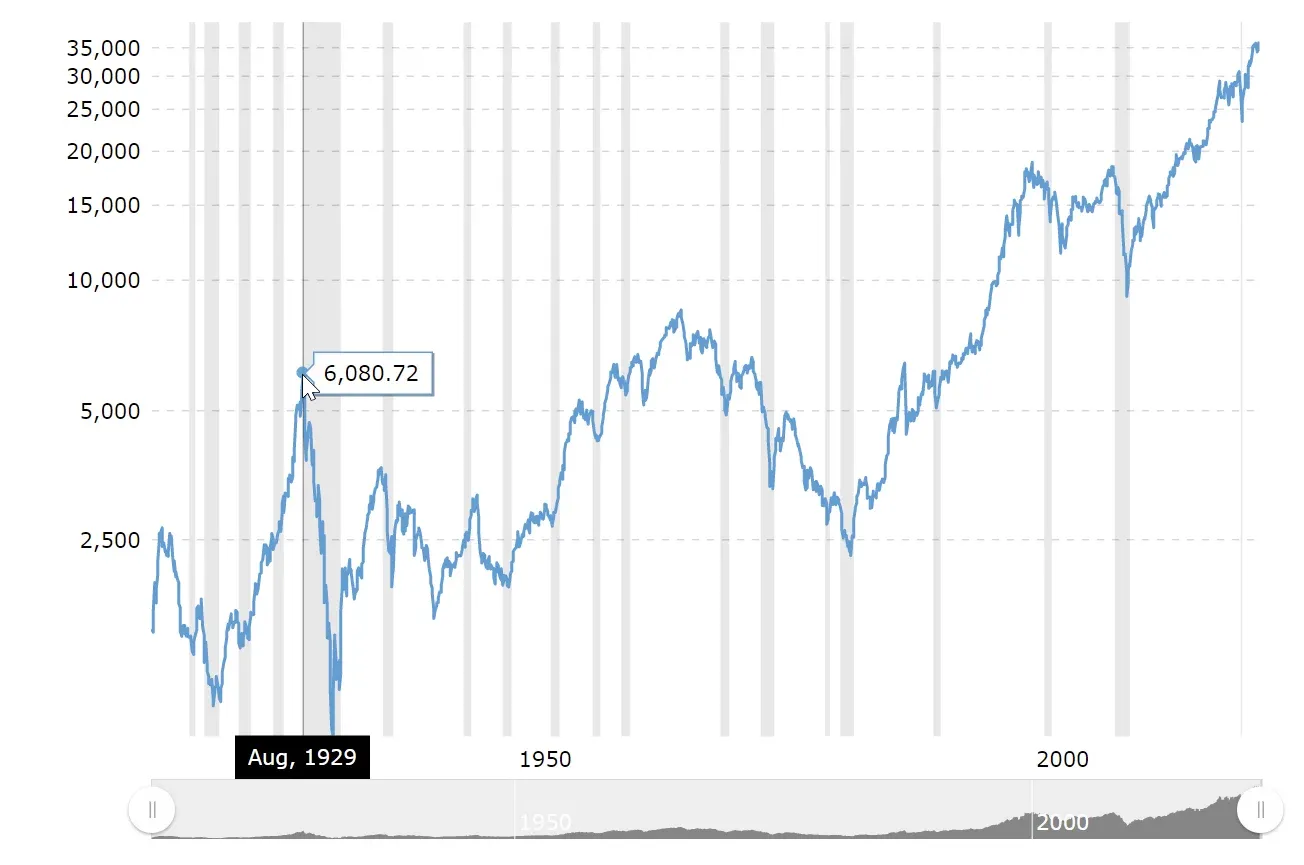
In August 1929 , just before the stock market crash, the index was quoted at $6080. Those who bought shares then saw their investment drop to an all-time low over the next three years with the index barely worth $903 in May 1932.... To survive this, investors need nerves of steel and a great deal of confidence not to give in.
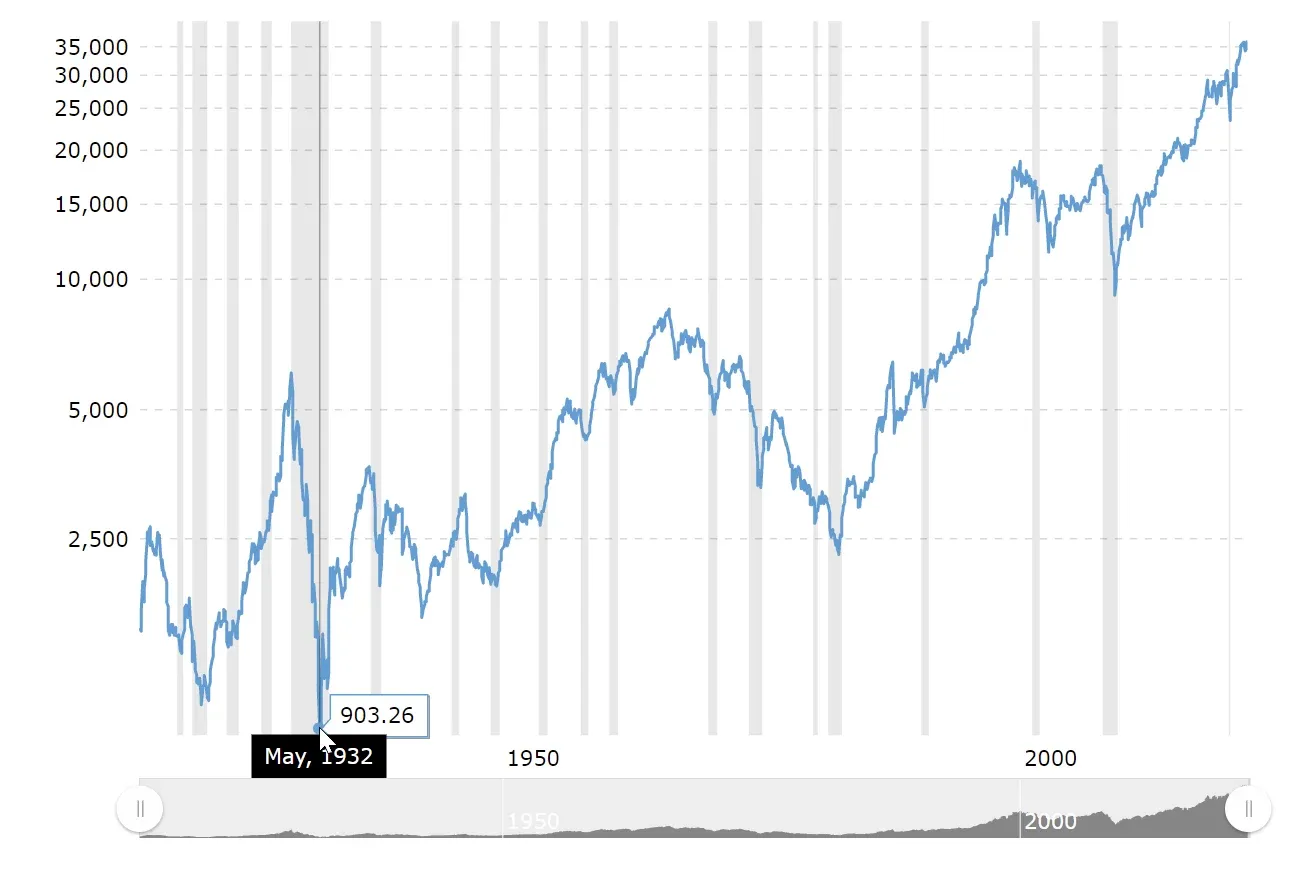
It lasted until August 1959 for the index to rise above the 1932 high. That's a time frame of no less than 30 years.
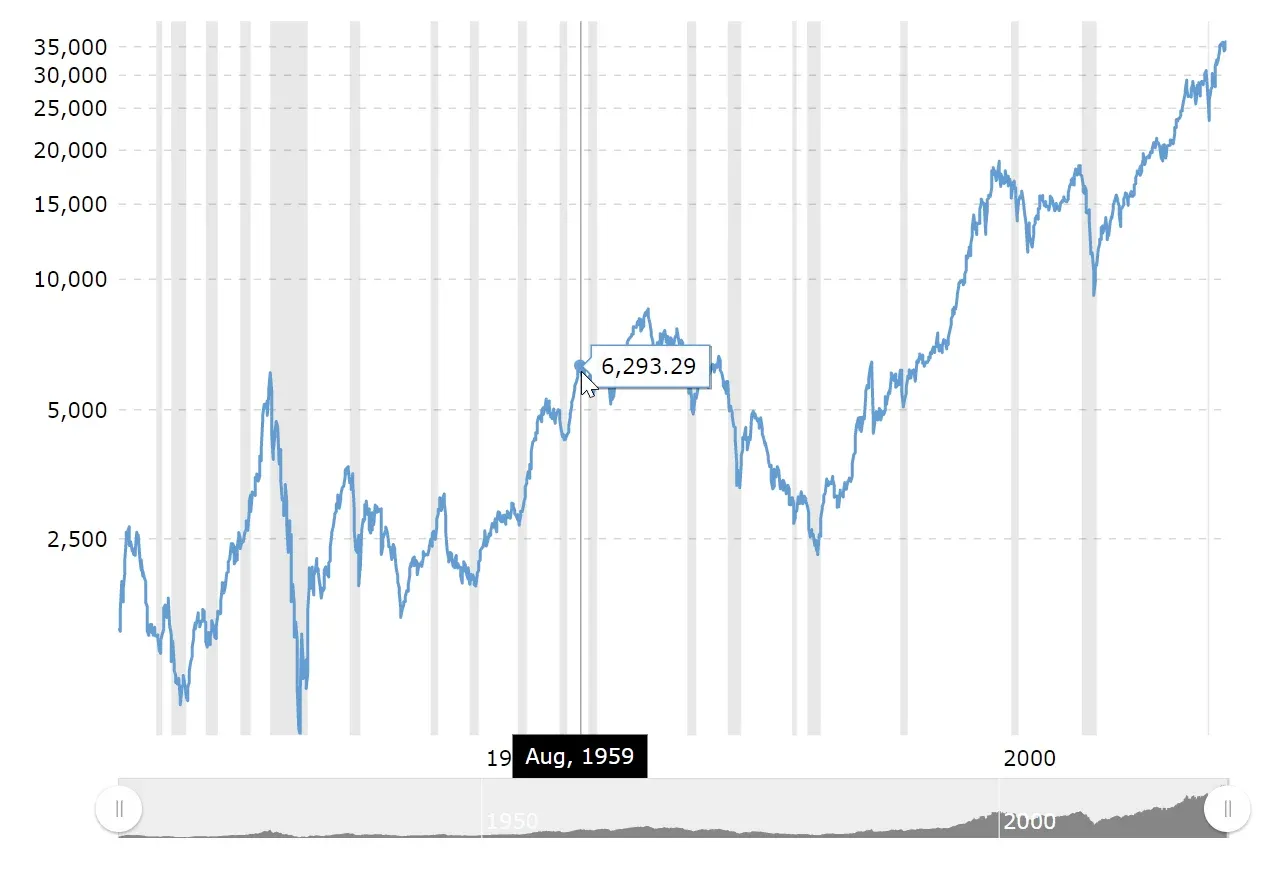
But there are other more recent examples, the dotcom bubble in the year 2000 for example.
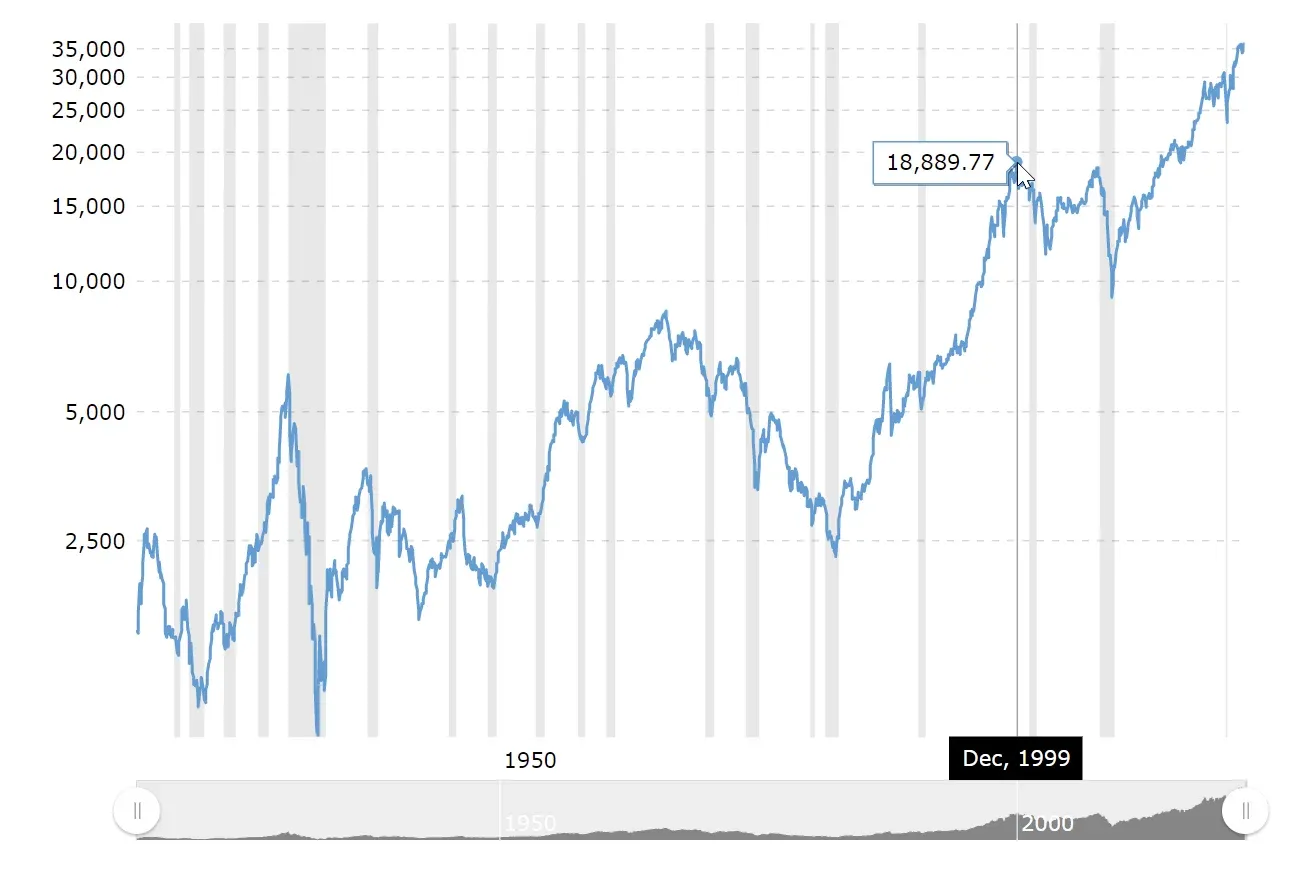
Those who bought the index in late 1999, early 2000 had to wait until November 2013 for the first initial gains.
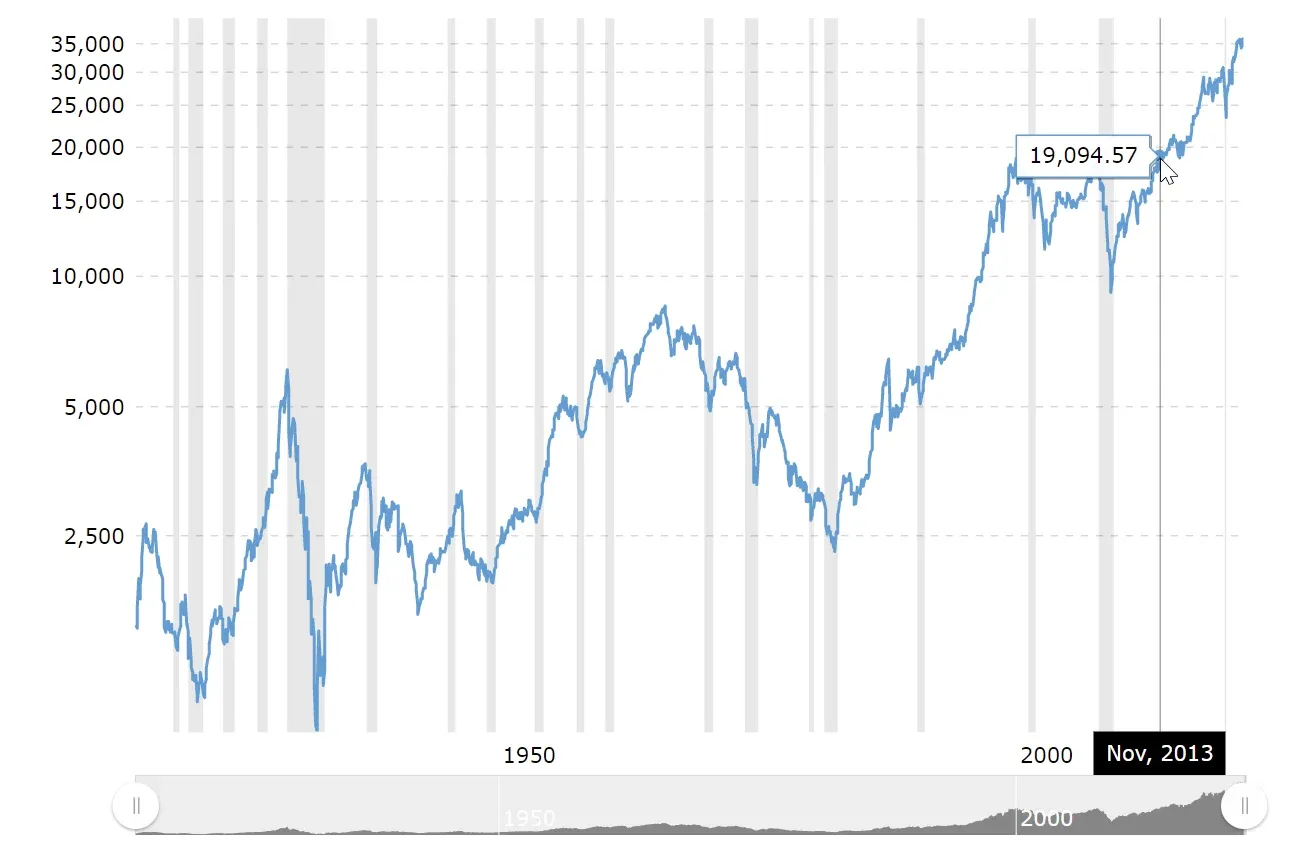
WHO IS THE BUY-AND-HOLD STRATEGY SUITABLE FOR?
Buy-and-Hold investing has a number of benefits that cannot be underestimated. Historically, there is a proven track record. The strategy is easy when the economy is booming and stock markets are rising worldwide. However, it becomes a completely different story in times of recession... Many investors cannot handle the pressure when their portfolio is piling up losses for a long time. Confidence in the strategy then disappears like snow in the sun. Investors become disillusioned and investing is abruptly stopped. Some of the examples above indeed show that sometimes a lot of time is needed to achieve any return. Periodic investing - also at lower prices - can be a solution and bring some mental peace when financial markets fall hard.



